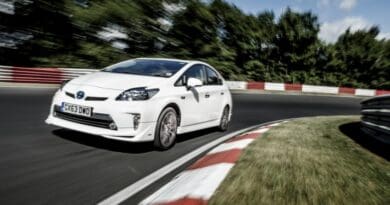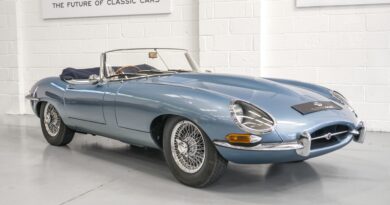
Peugeot E-3008 review: sharp SUV loses out in the space race
We find out if Peugeot’s ID.4 and Renault Scenic rival is up to the task
The Peugeot 3008 has been a massive success for the French brand.
Over the last seven years it’s sold more than 1.3 million examples of the family SUV. But Peugeot plans to be all-electric by 2030 and the previous generation of 3008 didn’t have an EV option.
So we’re now onto the third generation of 3008, which is the first car to be built on the Stellantis STLA platform. For anyone who isn’t a car architecture nerd, that means it’s on all-new underpinnings that will support petrol, hybrid and all-electric powertrains.
That means, for the first time, we’ve got a fully fledged E-3008 ready to take on the likes of the Renault Scenic, Ford Explorer, Skoda Enyaq and Kia EV6/Hyundai Ioniq 5 pairing.
Design, interior and technology
The previous generation of 3008 had a very traditional SUV shape, albeit with a touch of Gallic flair. This new model edges away from that slightly and clearly draws heavily on the swoopy lines of the 408 fastback. It’s still an SUV with a prominent upright grille, but the rear hatch dives down far more dramatically than before, although not at the expense of rear headroom or boot space.
Details such as the triple ‘claw mark’ headlights and fading textured pattern to the grille area add a new level of detail, as do some dramatic wheel designs and a two-prong floating rear spoiler.
Peugeot hasn’t held back inside, either. The French firm is the most adventurous wing of the Stellantis group and the E-3008’s cabin is a brave asymmetrical affair with a blend of glossy plastic and tactile fabric on many of the key surfaces.
The high centre console splits the front space in two with a hockey stick-shaped panel housing the drive selector and half a dozen physical switches for key functions. It’s a striking look that helps the E-3008 stand out among rivals with more traditional mirrored layouts.
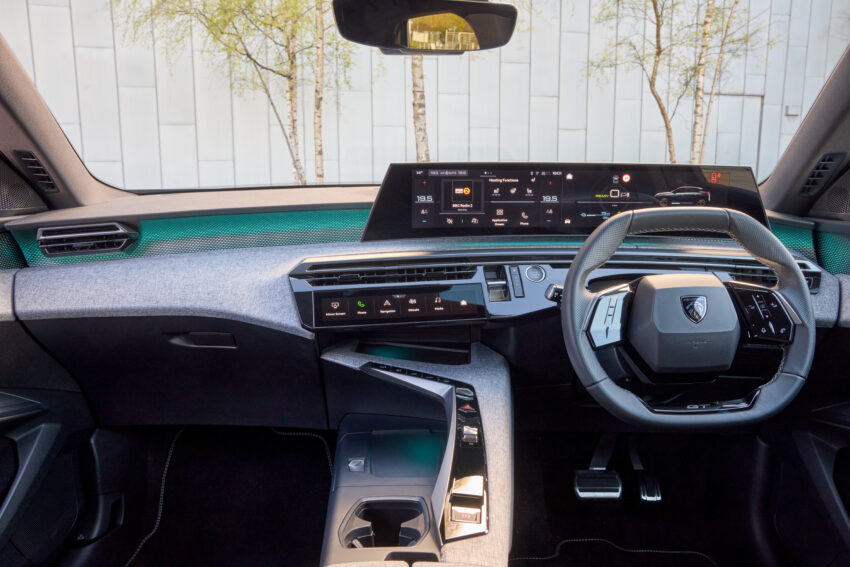
The unique approach continues ahead of the driver with the i-Cockpit layout. This features a fully digital instrument panel mounted behind a miniscule low-set steering wheel. The instruments are crisp and configurable, as is the multimedia screen which bleeds into the instruments in a single 21-inch sweeping display. The system behind this is improved on previous Peugeot versions and the most-used functions are easier to find. It’s still not class-leading but it is decent enough. And it’s improved further by the i-Toggles beneath the main screen. This is a configurable touch panel from where you can call up your own favourite shortcuts to the main screen for quick and easy access.
Amid the smart design and high-quality materials, there’s decent but not class-leading space. Passenger accommodation isn’t bad, and the 588-litre boot is one of the biggest in the class, but rivals offer more room in the rear seats. The Ford Explorer and Renault Scenic, in particular, provide more rear legroom than the Peugeot, thanks to longer wheelbases. That said, four average-sized adults should manage on board.
Battery, motor and performance
For the moment, the Peugeot E-3008 is only offered with one powertrain setup. It uses a 207bhp motor on the front wheels and a 73kWh battery with 160kW DC charging.
That translates to a 0-62mph time of 8.8 seconds and a quoted official range of 326 miles. Both are decent enough, especially considering the performance of Peugeot EVs from even five years ago. However, in the battle for raw numbers, the E-3008 comes up a little short compared with most rivals, which are a little quicker and have a little more range.
As ever, the real world reveals the flaws in the WLTP test cycle. I got around 3.7m/kWh, which with a 73kWh battery equates to an actual range of around 270 miles. If, for some reason, that isn’t enough for you, then next year we’ll get a 98kWh model promising more than 420 miles on a single charge. There will also be a 316bhp all-wheel-drive version using the 73kWh battery but still offering an official 326-mile range.
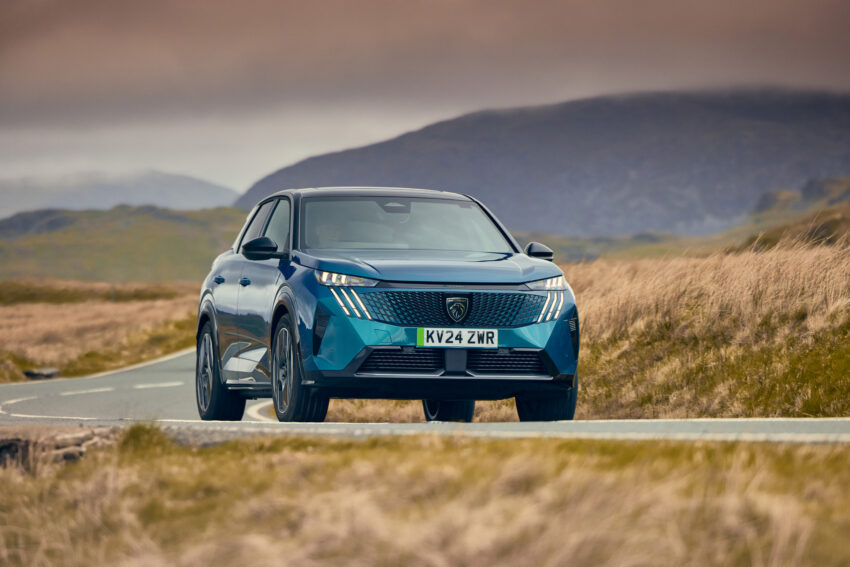
The previous generation of 3008 was surprisingly lively on the road but this new, battery-powered version has sacrificed most of that in favour of refinement and comfort. The steering feels quick thanks to the tiny steering wheel but it also feels over-assisted and uncommunicative. The quick steering isn’t helped by some obvious body roll and sometimes firm ride that can leave passengers feeling a little thrown around on faster roads.
On the plus side, cabin refinement is excellent, with wind and road noise well suppressed even at motorway speeds.
Price and specification
We’re now in a world where a low-spec family EV can cost £45k and it’s easy to pay £50,000+ for higher trim grades. And that’s where the E-3008 is. Basic Allure models cost £45,850 and the GT grade I tested started at a couple of hundred quid shy of £50,000. That was before Peugeot added £5,000 of options – from £750 for white paint to £1,600 for Nappa leather and £1,2000 for a panoramic sunroof and premium sound system.
Look around at Volkswagen, Skoda, Ford or Kia and you’ll see similar price ranges, but the sticking point is that £55k will get you a Ford Explorer with all-wheel-drive and an extra 130bhp, if that tickles your fancy. Or, alternatively, you can sacrifice a little power and save at least £5,000 with a Renault Scenic that offers more space and range.
At least at the sharp end of £55k, you get plenty of equipment, from a powered tailgate and full LED lights with high beam assist to heated seats and adaptive cruise control. And Peugeot is playing it smart with some very competitive monthly offers for finance buyers.
Verdict
The E-3008 is a good car. A really good car. It’s sharp looking, impressively refined and has a high-quality cabin with user-friendly features. There’s also nothing wrong with its performance or range and, in isolation, I can imagine most buyers being perfectly happy living with one.
The problem is that most key rivals offer better space, performance and/or range, so Peugeot is relying on admittedly very attractive PCP packages to make the E-3008 stand out.
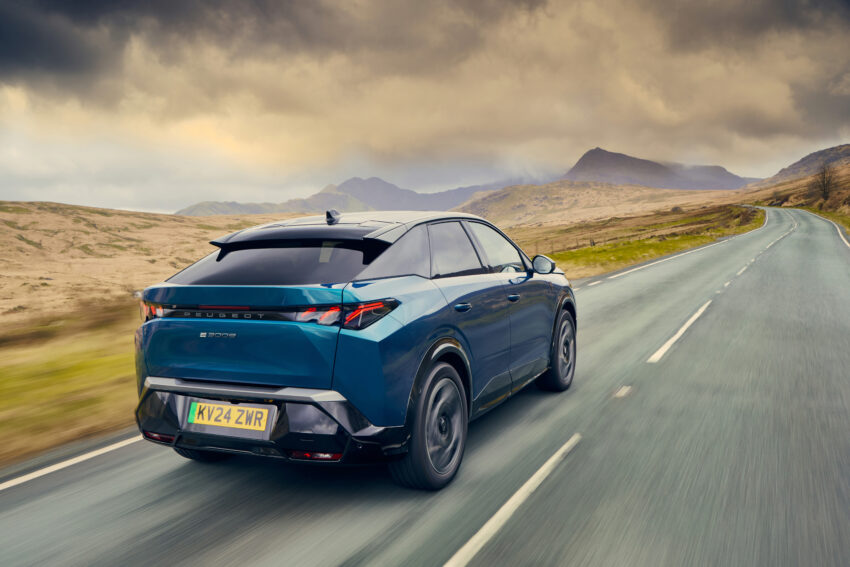
Peugeot E-3008 GT
- Price: £49,650 (£54,500 as tested)
- Powertrain: single-motor, front-wheel-drive
- Battery: 73kWh
- Power: 207bhp
- Torque: 254lb ft
- Top speed: 105mph
- 0-62mph: 8.8 seconds
- Range: 326 miles
- Consumption: 3.7m/kWh
- Charging: up to 160kW

